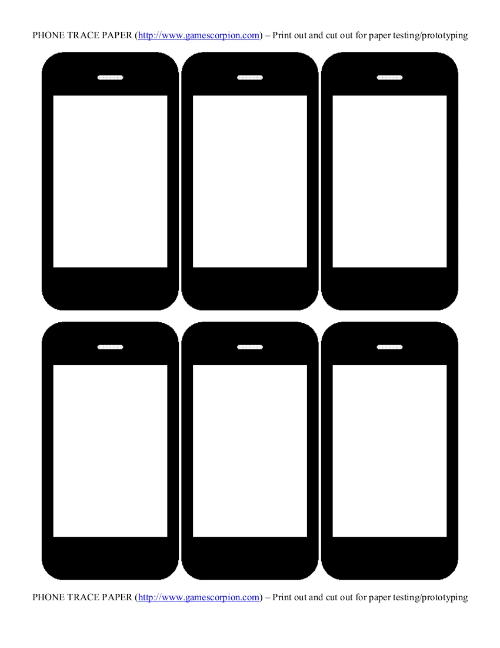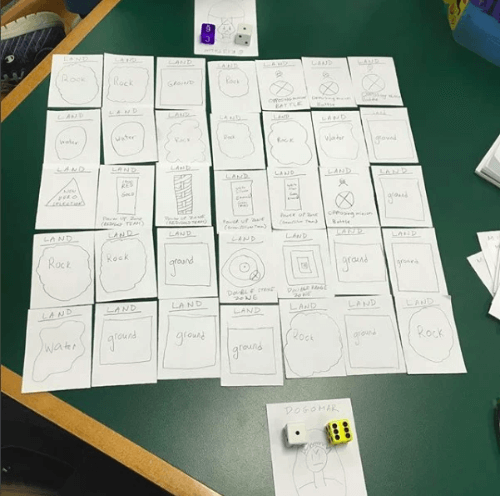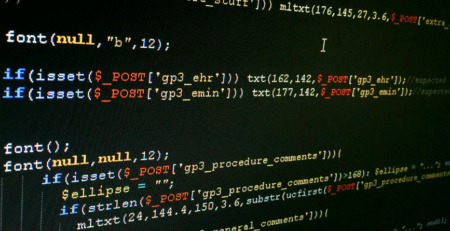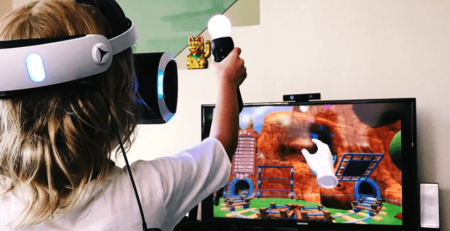Paper Testing – 7 Tips to a Better Game / App
We are so caught up in a “Build Build Build” world that we tend to forget the easiest and most cost effective way of testing out an idea…PAPER TESTING!! How often do you paper test an idea?
Paper testing…it is the cheapest and most cost effective way to test out ideas, yet how often do we as developers do this?
The biggest challenge we face is when we forget this CRITICAL step as if it doesn’t matter and then we actually go and start working in Unity, laying down code and ideas and before you know it, you’ve wasted hours, days, weeks or even months on an idea that never should have been made in the first place!
Here are 7 tips to Paper Testing that will help you save time and money and avoid many stressful days shipping an unnecessary product!
1. Start With CLOCKWORK
Here at Game Scorpion Inc. there is a motto in our grand triangle of things that is called CLOCKWORK. Clockwork is the concept that we as human beings have HABITS that happen in cycles regularly. From brushing our teeth daily (Or at least I hope most of you do that hehe) to commuting to and from work, each one of us has habits that happen consistently. If you’re living in North America, we have seasonal habits, such as winter time up here in Canada and North US States, to national and international holidays such as Christmas and New Years Eve.
Even certain GROUPS of people have habits as well, such as students who have to get up for school or study for exams that happen around the same time for most students.
Make your app or game around HUMAN clockwork habits, things we as humans do regularly. If you do NOT make your app or game to fulfill a human need that happens on a daily or weekly schedule, chances are your users will NOT be coming to your app or game often enough to really monetize.
Consider this => Assuming a freemium or ad based model for your game or app, 1,000 Ad Views (eCPM – effective cost per mille) is equal to around $1-$5. That means it takes 1,000 eyeball views to generate $1-$5 USD in general (For the most part, these aren’t exact figures but just to give you a range).
If users are NOT coming into your app / game often enough (Some apps are actually made not to be used that often, yes those do exist), then your monetization strategy would have to be adjusted to match this. Using the example of a freemium ad based model, I’d convert the game / app into a paid premium solution and focus on building a high quality experience and remove ads in that case OR I’d try and find a way to BUILD a habit, which brings me to my next point about clockwork…
The best apps and games BUILD a habit using the end users clockwork cycles until soon enough, the game or app itself is a clockwork item. Take the Facebook app for example. Think about how FACEBOOK became a part of your daily clockwork cycle (For those who do use facebook. If not, then think of any other app that has become your daily go to app such as an email app). Before people would not even visit it when it was first starting out, but now today its literally a clockwork item (Generally checked first thing when people wake up and last thing when people go to sleep at the very minimum for most).
ACTION STEP: Figure out WHERE and WHEN your end users will use this app or game. What clockwork habits do they have? Is this something they would do at least 2-3 times a day? 2-3 times a week? Once per year?
2. Throw It Away! (Don’t Fall In Love)
The beauty of Paper Testing is that we can easily just erase things or even throw out an idea. I’d recommend taking a 30 minute brainstorming paper sprint to write out ideas and test them on paper. Literally design ideas and prototype them with paper.
Don’t be afraid to THROW AWAY a piece of paper! Get a notepad, draw all over the paper, and when you’re done with an idea, throw it out and just keep the items you like. Whatever you do, don’t just fall in love with any one idea.
The biggest mistake we make as developers is we fall in love with ideas and make them into ‘our baby’ when in fact we are NOT building these things to be ‘our baby’ but our ‘USERS baby’. That’s the point many of us forget, is that we are building this for the END USER and as such we need to focus on not falling in love with something. Our end users will let us know in beta tests if something is good or not, but once we fall in love with something, sometimes that ‘something’ (a feature or a way the app works) could be the very thing that causes attrition rates (Users leaving our app).
ACTION STEP: Take out a paper and pencil now and take 30 minutes to draw out your entire app idea! Draw out the screens, the steps, each action that could take place and more! Repeat the exercise each time and you’ll be amazed at the results 🙂 Every time I do this, I end up getting new ideas for the exact same app and finding bugs and issues that would have been horrid if I had actually went ahead and coded things!
3. Do NOT limit the HOW!! (Drop Your Restrictions! Stop talking dev!)
When paper testing, we tend to put our “Programming/Developer” cap on and start looking at limitations. I want you to STOP THAT and pretend for a moment (Just when doing the exercise) that ANYTHING IS POSSIBLE! Yes your app can FLY if it wants to!
The trouble we run into when doing paper designs is we try and put things into a little box based on our previous experience. For example, “Oh I am going to put a div here and it will use a css highlight trick, etc. etc.” THAT’S DEV TALK! When doing this exercise, DO NOT TALK DEV!
Here is an example of what you SHOULD be saying when creating a paper design:
1. As a user I want to be able to LOGIN (This later becomes a USER STORY). What are some easy and fun ways I could login if I had unlimited resources and there was no restrictions and I had unlimited access to anything?
You may come up with the following ideas:
-Fingerprint
-Eyeball scan
-Call the user and check if they are real
-Build a Ring that users can scan in (One ring to rule them all 😉 LOTR Fans)
-Login with a UPC Barcode
etc.
The point is that when you stop limiting the “HOW” to simply what you can do currently as a developer and open your mind to all possibilities you may end up finding that there may be a new and better way to do things. As we grow as a society we are rapidly changing how things are done. For logins for example, we have 2D input forms, but in the coming years everything could turn into AR (Augmented Reality) and be full 3D forms and experiences. By that time a login could be me LITERALLY walking into a virtual door.
ACTION STEP: When you are doing your 30 minute brainstorming paper design exercise, do it without thinking of any development restrictions and open up your mind to unlimited possibilities. You may find an idea or new experience for end users that could give you an added edge against your competition and could lead the way when it comes to your mobile app / game. By the way, if you think that “That’s impossible, it’s already been done”, think about how long after the INTERNET started that Facebook and Twitter came out. Facebook came after many community sites existed and Twitter came out well after blog sites existed to become a unique micro-blogging service. You may be surprised at what you find, and that is the heart of innovation itself! Go and innovate some new ideas!
4. Use Digital Tools To Test Ideas
There are several tools on the market that allow you to test out your paper prototypes. My favorite (And in my opinion the FASTEST one I’ve ever used) has been the Marvel App (https://marvelapp.com/). This one app allows you to simply take photos of your paper drawings and then create an instant prototype out of it with functional buttons and moving screens.
There are other apps as well (Such as Invision => https://www.invisionapp.com/) that allow for even more extensive prototyping, but the point is that these tools can help you really flesh out an idea even more.
ACTION STEP: After you have completed your paper prototype on paper, download the Marvel app on your phone and go ahead and make a digital prototype and see how your app works. After it’s done, give the digital prototype to some friends (even better if they are in your target market) and get their feedback on your idea. (If you think your app is really going to be the next hit app, feel free to have your testers sign an NDA – Non-Disclosure Agreement).
5. Use Templates
There are a whole slew of phone and tablet templates out there. Grab one you like and download and print it off. Usually these templates help you to design even better as you get an idea of the device that you’re building for. Below I have my own trace paper template you can use for designing on phone screens:

ACTION STEP: Print out a copy of the Template I posted above and use it for your own paper designing for phone apps and games.
6. Materials For Paper Testing
Here is a list of things I have when I do paper designing and testing of any kind:
-Pencils (I usually have a stack of them)
-Eraser
-Pen
-Paper Pads (Duh!) 4×6 pads
-Garbage/Recycle Bin (Throwing out bad ideas)
-CLOCK (To time me if I’m time-boxing my brainstorming session to 30 minutes)
ACTION STEP: Go out to your local dollar store or Walmart or general store and get all the items listed above if you don’t already have them. This will allow you to start a solid paper design and testing session!
7. HAVE FUN!
This one is SERIOUSLY a seventh tip because we tend to forget to do this! Paper testing and design is a FUN process. This is the part of the entire development cycle that you are not losing massive amounts of money or crazy amounts of time fixing code or creating assets for your next hit game / app. This is where you can really refine things and get back to the basics with very little long term loss. Compare this to how much time and money you lose when having to refactor code or redo an entire game level because it just did not work out, etc.
ACTION STEP: Smile! Take photos, throw them on Instagram (Follow me on Instagram => https://www.instagram.com/academyofgames/), show your paper designing journey and let others see your progress. Not only will you build early fans but you’ll also have some fun along the way!
 Paper Prototype of my game Armies of Riddle E.X. (Coming Soon on Steam)
Paper Prototype of my game Armies of Riddle E.X. (Coming Soon on Steam)
Conclusion
Paper Testing and Prototyping is not just a fun process but a CRUCIAL first step before laying down any actual code or design in Unity. I can’t stress how much money and time is saved and how many hurdles are avoided just by this one technique alone. I’ve seen too many developers launch games and apps only to have critical flaws that would have been caught in this early stage in the process.
I look forward to seeing you all create awesome games and apps! You’re a champion! Be the best! I believe in you! 🙂
Nav is a Unity Live Expert and Mobile Game and App Developer
LEARN TO MAKE GAMES FOR FREE! => Watch Me Live On Twitch => https://www.twitch.tv/academyofgames0
“I’m a game dev making fun awesome RPG and Fantasy Games. Check out my games on Steam and all major mobile platforms today => Game Scorpion Inc.!”















Leave a Reply